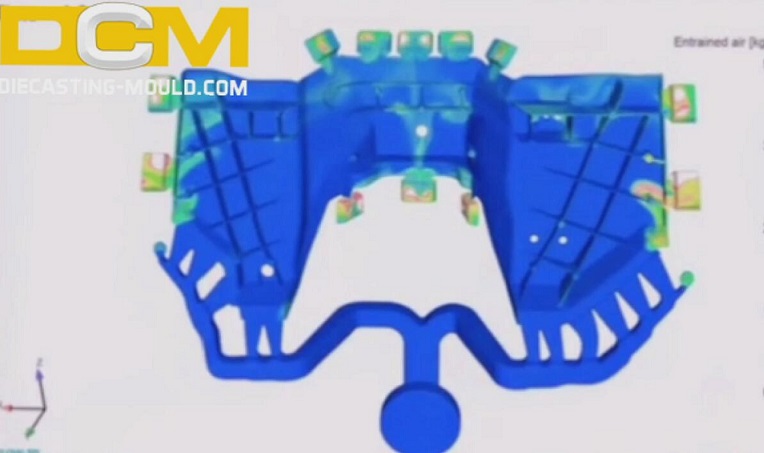Porosity in Aluminum Alloy Die Castings and New Development of Die Casting Technology | Diecasting-mould
Die-casting aluminum alloy has good performance and processing properties. Therefore, aluminum alloy die casting develops rapidly, and it is widely used in various industrial factories. Also, it is used more than other non-ferrous alloys, which plays an extremely important role in the die casting production. The workpiece produced by aluminum alloy casting foundry is often scrapped due to the porosity. There are many reasons for the occurrence of porosity, and many people don’t know what to do to solve this quality problem. How to quickly and correctly take measures to reduce the rejection rate caused by the aluminum die casting porosity is the concern of all cast factories.

Performance of Die Cast Aluminum Alloys Required
For a long time, the die casting parts in China always have the disadvantage of porosity. Therefore, they are only used for decorative parts or parts without a heavy load, resulting in the development of die-cast aluminum alloy grades remaining several models. With the development of production and grasp of die-casting technology, people have put forward more requirements in expanding the application range of die-casting parts. For example, in the structural improvement of reducing the weight of the bike, one of the most important measures is to replace steel with aluminum alloys for manufacturing bicycle parts. Die-casting aluminum alloys should not only meet the working performance requirements of the parts, but also have the following properties in order to manufacture parts successfully.
(1) When the superheat is not high, even in the temperature range of solid and clear liquidus temperatures, aluminum alloys should have good plastic rheological properties. That means under pressure, the aluminum alloy liquid which seems to be sticky still has excellent fluidity. It is easy to fill the complex cavity, ensuring good casting surface quality and reducing shrinkage holes in castings. At the same time, we should improve the working condition of the die-casting mold and increase its working life.
(2) Aluminum alloys that have a small crystallization temperature range can reduce the possibility of defects in the casting.
(3) Aluminum alloys that have a certain high-temperature solid strength can prevent deformation or cracking of the casting when the mold is opened and then push the casting.
(4) Aluminum alloys should have a certain strength at room temperature to improve the mechanical strength and surface hardness of the die casting as much as possible.
(5) Aluminum alloys should not have a chemical reaction with the pressured type.
(6) Aluminum alloys should not easily take in gas or oxidize so as to meet the requirements of long-term heat preservation during die castings.

